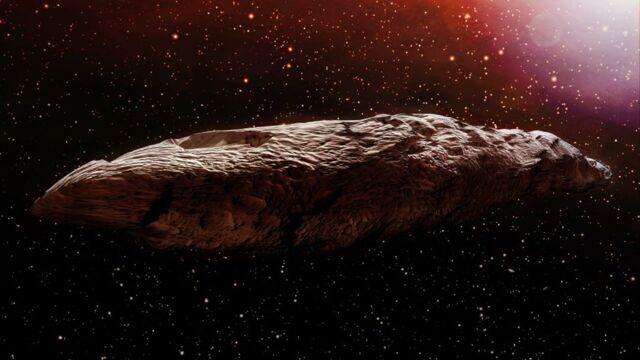Up to seven interstellar objects could enter and leave our solar system every year, according to a study recently published by an international scientific team. The interstellar objects are likely to have formed ‘very far from the solar system,’ but they ‘can be directly observed by ground-based telescopes and potentially explored at close range by spacecraft,’ the study says.
Discover our latest podcast
A vanishingly rare occurence
Only two such objects have been discovered and identified so far: Oumuamua in 2017, and Borisov two years later. The challenge now would be to be able to predict the trajectories and orbits of these objects, as ‘the discovery of other interstellar objects and the planning of missions to intercept or encounter these bodies will benefit greatly from the knowledge of their orbits and likely arrival rates,’ the study says.
The discovery of Oumuamua and Borisov ‘have opened up entirely new areas of research’ into interstellar objects, which are still highly mysterious. Oumuamua has been the subject of many theories, ranging from an interstellar comet to an alien spacecraft to an asteroid. Two recent scientific papers suggest that this interstellar object is in fact ‘a sliver of a small planet from another solar system,’ says Business Insider US. While its composition has not been formally established, Oumuamua may be made of nitrogen ice. The interstellar object entered the solar system incognito, and when it passed close to Earth in October 2017, scientists only had a very limited amount of time to observe it.
Probes to intercept interstellar objects
Projects have been launched to enable these interstellar objects to be 'encountered' so that they can be studied more closely and for longer. Two options are being studied: interception and tracking, the latter being less favoured because of the speed at which the objects move. Interception would be based on flux, speed, and orbit predictions and would allow a probe to be launched at given coordinates in order to intercept the trajectory of the interstellar object in question.
A mission has been launched by the European Space Agency. Called Comet Interceptor, it would comprise a mother ship and two space probes and would fly over the target as it approaches Earth orbit in order to create a 3D profile. While the focus would be on studying comets in the Solar System, ESA also foresees interstellar objects as potential targets. Comet Interceptor is expected to be launched in 2028 onboard the future Ariane 6.2 launcher.















